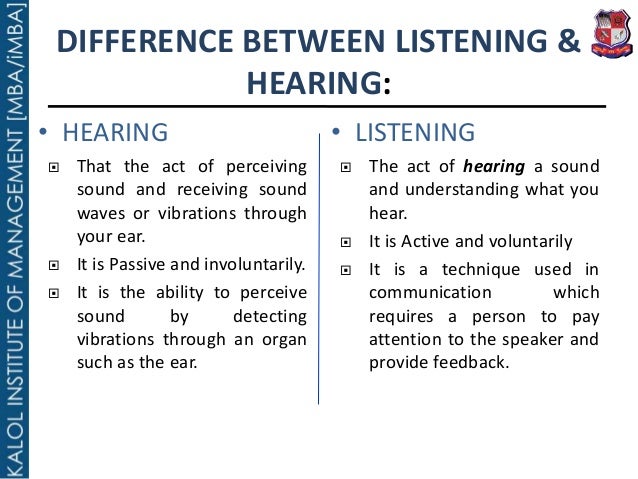
They don’t put as much effort into listening.īut, to the surprise of many new learners, listening to a foreign language is challenging. Many language learners place a high value on speaking. Why is listening so crucial while learning a language? It’s not an effective way to communicate with others. On the opposite end is passive listening.Īccording to Gilliland, a passive listener does not strive to contribute to the conversation, especially in work or school. In other words, this is the way you want to listen if you’re trying to understand another person or you’re looking for a solution. Active listening is defined by the United States Institute of Peace as “a way of listening and responding to another person that increases mutual understanding.”

In the field of communication, there are two terms that specialists frequently use: active and passive listening.Īn active listener can be summed up in a single word: curious. We can take it a step further when it comes to the definition of listening. Active and passive listeners: what are the differences? “People who excel at their job, marriage, or friendship have trained their ability to listen,” adds Gilliland. Listening, on the other hand, is a three-dimensional experience. This will help you make thoughtful comments and ask relevant questions to have a better understanding of their perspective.Īccording to clinical psychologist Kevin Gilliland, the distinction between hearing and listening is like night and day. As they speak, you will gain a better sense of their experience. Listening with the intention to understand is referred to as active listening.įor example, if you’re listening to someone talk about a bad day, you’re paying close attention to them. Listening is a deliberate, and intentional process that involves making sense of the words you hear it needs your thoughtful attention.Īs a result, you may generate an emotional reaction to what you hear. It does not involve focused attention.įor example, if you’re watching television, you are still hearing the noise of traffic outside, your neighbor’s dog barking and people laughing. It is a physiological reaction involving our perception of sound. Hearing is an involuntary, sensory mechanism that allows us to perceive sounds. However, it’s not that easy because listening is a complex process of both emotional and physical skills. Most people believe that, unlike the learned abilities of reading, writing, and speaking, listening is a natural action that requires no conscious effort from anyone without physical impairment.
Difference between hearing and listening lessons how to#
With listening accounting for 45 % of our communication time, we must learn how to listen well to receive the full benefits. Choosing to listen to another individual actively is a good quality to have, and it can bring bountiful relationships into our life.According to Ohio University research, the average adult spends over 70% of their waking hours socializing in one form or another.ĩ% of that time is spent writing, 16% reading, 30% speaking, and 45 % listening. On the other hand, if we choose to listen actively and engage with others, we are showing them that they matter and forming an alliance, and strengthening relationships. By not listening to someone or passively listening, we are causing strain on that relationship, which can eventually affect our mental health. In other words, we are telling this individual that what they are saying and feeling is not essential at the moment, and as a result, we are minimizing them.

Sometimes we choose not to listen to another individual because we are too busy or do not want to hear what they say.

When we choose not to listen to someone, whether our spouse, coworker, peer, friend, or child, we potentially create a rift in the relationship. Hearing and listening and the lack of each can drastically affect our mental health. How listening and hearing can affect our mental health


 0 kommentar(er)
0 kommentar(er)
